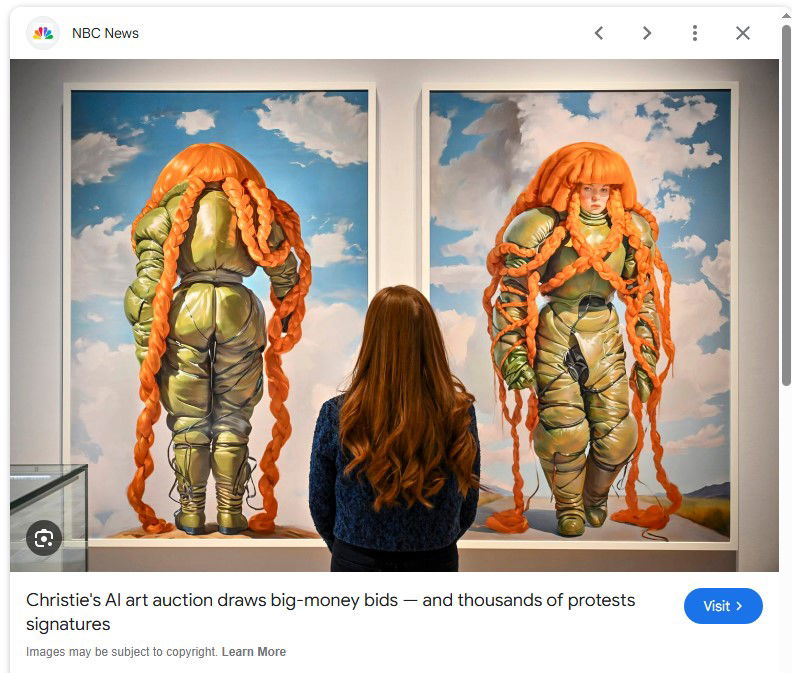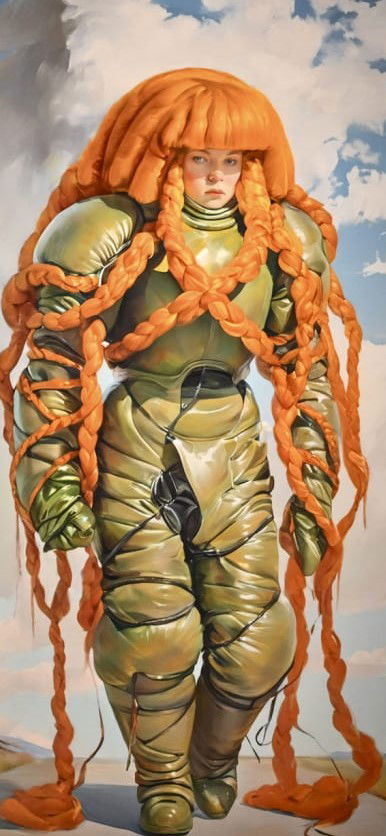Christie's AI Art Sale Sparks Outrage: A Battle Between Technological Advancement and Artistic Integrity

Christie's auction house has plunged into the heart of a burgeoning controversy with its first-ever sale dedicated to AI-generated art. The "Augmented Intelligence" sale, featuring approximately 20 pieces and running online until March 5th, has ignited a firestorm of protest from artists who accuse the auction house of facilitating copyright infringement and undermining the value of human creativity.
By Susan Davis

While Christie's, like its rival Sotheby's, has previously sold individual AI-created pieces, this dedicated sale marks a significant escalation, reflecting the rapid mainstreaming of AI art tools following the November 2022 launch of ChatGPT. The accessibility of AI models capable of generating diverse artistic outputs from simple text prompts has dramatically expanded the market, creating both exciting possibilities and significant ethical concerns.

Image Credit: flickr.com
Christie's defends its initiative, highlighting the growing public understanding and appreciation of AI's role in the creative arts. Nicole Sales Giles, head of digital art sales at Christie's, emphasizes that the included artists utilize AI to augment their existing practices, not replace them. The sale showcases a variety of mediums, including paintings, sculptures, photographs, and digital works, with highlights such as Pindar Van Arman's "Emerging Faces," estimated at up to $250,000. This piece uniquely involves a "conversation" between two AI models, one painting and the other acting as a form of artistic editor.


However, the sale has been met with a petition garnering over 6,300 signatures demanding its cancellation. The petition alleges that many submitted works utilize AI models trained on copyrighted material without licenses, effectively accusing the sale of contributing to "mass theft of human artists' work." This echoes several lawsuits filed in 2023 against generative AI startups like Midjourney and Stability AI, alleging intellectual property violations.
The debate centers on the ethical implications of AI art creation. While some artists, such as Refik Anadol (featured in the sale with "Machine Hallucinations"), argue that many participating artists utilize their own datasets and models, others strongly disagree. Illustrator Reid Southern, a petition signatory, believes that at least one-third of the sale should be excluded due to the likely use of unlicensed material. He draws a strong parallel to a traditional art sale featuring counterfeit or stolen works, highlighting the ethical lapse he sees in Christie's proceeding.
Christie's responds that the practice of artists drawing inspiration from existing work is not new and that every artistic movement faces initial controversy. However, this argument fails to fully address the core issue: the systematic and potentially unlicensed use of vast quantities of copyrighted material in the training datasets of generative AI models. Conversely, artist Sarp Kerem Yavuz, who used Midjourney to create the piece "Hayal" for the sale, argues that the sheer volume of data involved makes individual copyright infringement practically impossible.
This conflict highlights the urgent need for clearer legal frameworks and ethical guidelines surrounding AI art. The question remains: can the immense creative potential of AI be realized without compromising the rights and livelihoods of existing artists? Christie's AI sale serves as a stark reminder that this debate is far from settled and demands immediate attention.